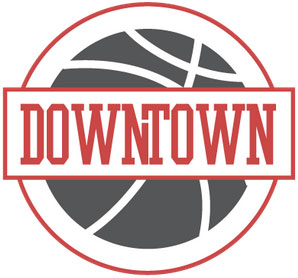The Sydney Kings’ move from the Sydney Olympic Park Sports Centre to Allphones Arena is minor in distance.
But the new Sydney ownership’s plan to shift the team means the Kings are going from a 4,500-seater opened in 1984 to a place with a selfie stick policy (they’re banned) and Ellie Goulding on its events calendar.
AEG Ogden is the new majority owner of the team, and it manages Allphones Arena and NBL venues in Perth, Cairns and Brisbane. It runs the International Convention Centre Sydney as well, which opens in December and will also host some Kings games.
The capacity of Allphones Arena—originally the Sydney SuperDome—can be altered from 7,000 up to 20,000, according to a Fox Sports article. That makes it the biggest NBL venue by about 6,000 seats, and it’s more than four times the size of the New Zealand Breakers’ North Shore Events Centre.
It’s the kind of building the NBL hasn’t seen recently, but the league does have history with the venue. In addition to hosting the basketball finals at the 2000 Olympics, Allphones Arena was the Kings’ home for three seasons from 1999-2002.
There are some who know what it’s like to play in the NBL’s outsize arena.
“It was amazing. At that time it was state-of-the-art, world-class,” said Matt Nielsen, the current Perth Wildcats assistant coach who played with Sydney for all three of their Allphones Arena seasons.
There was another basketball court under the stands where the Kings trained and their change room was spacious enough to house treadmills and TV and recovery areas.
“I just felt like it was very NBA-like, we were very lucky to have it at that stage,” said Nielsen, who lived nearby in Newington and used the venue as his backyard hoop.
“It was definitely a different type of court. Funnily enough, being over here in Perth now, it’s somewhat similar in that it’s very open. Because of the size of the stadium, there’s an openness to the feel of the court.”
Nielsen preferred playing with that sense of space, which isn’t so pronounced in Cairns, Townsville or Illawarra.
The Kings started playing in the arena before it was officially opened in November 1999. They began their run at the new facility on October 2 that year, after owner Mike Wrublewski moved the team from the Sydney Entertainment Centre.
Sydney’s first game at Allphones Arena was against the Canberra Cannons and drew 17,143, still the largest NBL crowd in history. It was the second game of a doubleheader that opened with the West Sydney Razorbacks beating the Brisbane Bullets.
It was obvious to Nielsen that the crowd was significant. “17,000 people stand out,” he said.
“The atmosphere was pretty exciting. I think people were excited to be in that stadium as well, it was something fairly new and historical for everybody.”
The former King’s memory of the game—a 22-point Sydney win—is sweetened by a play he made in the process. After stealing the ball at half-court, he dribbled toward the hoop and Canberra’s Dave Simmons, who was in the key looking to take a charge. Nielsen dunked over him.
About a year later, the Boomers were competing in that building for their first medal at the Olympics.
“It was like an NBA stadium, it really was. It was like playing an NBA game,” said Shane Heal, who was on that Olympic team and played two seasons at Allphones Arena with the Kings.
Bruce Bolden played at the venue as a visitor with the Razorbacks. He noted it’s equipped for the entertainment side of things and is a place where players enjoy playing.
“It did feel special. It felt like you were running out on the court in a big-time venue that could be up there with NBA venues,” he said.
“It was one of the things that motivated you and really got you going in warmups, running out in such a high-calibre venue.”
The crowds at Allphones Arena weren’t always at that opening-night or Olympic level. As Matt McQuade wrote in a 2001-02 Kings season summary, “poor attendances, reduced corporate support and the enormous cost of using the gigantic facility that was the Superdome all conspired to pull the franchise into debt they simply couldn’t recover from.”
Said Heal about the smaller attendances: “They did a pretty good job of having curtains and being able to disguise that a little bit, but it’s a very, very big venue, so it’s tough to be able to create the same atmosphere if you’re not getting the same sort of crowds.”
In 2002 the team was owned by a consortium, and the Kings went into voluntary administration. The club survived when a new consortium purchased the licence, but it moved the Kings back to the cheaper Sydney Entertainment Centre. It was a reminder that the rewards of playing in big buildings can come with risks, too.
But that was 14 years ago, and the league and Sydney’s ownership have changed—the second stint at Allphones Arena will likely be somehow different to the first.
There’s potential for the Kings to succeed playing in the NBL’s biggest gym.
“I’m excited for them,” Nielsen said. “I feel like if they can find the balance of putting out a good product and playing in a venue like that, it’s great for the sport.”



Please comment with your real name using good manners.